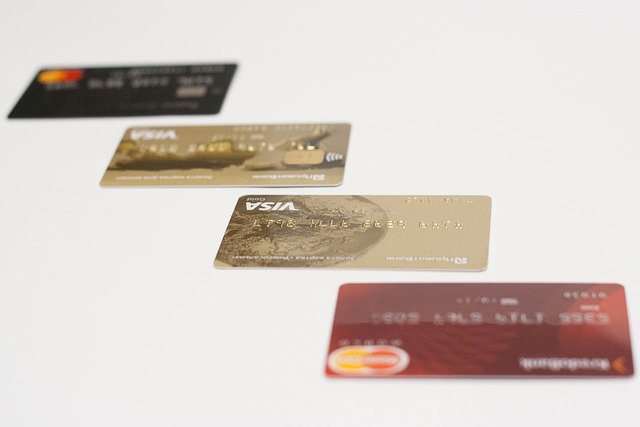Credit Cards: Understanding Your Options and Choosing the Best Card
Credit cards have become an integral part of modern financial life, offering convenience, security, and potential rewards. However, with countless options available, selecting the right card can be overwhelming. This comprehensive guide will help you navigate the world of credit cards, understand their features, and choose the best option for your needs.

What are credit cards and how do they work?
Credit cards are financial tools that allow you to borrow money from a lender to make purchases. When you use a credit card, you’re essentially taking out a short-term loan that you’re expected to repay within a specified period, usually monthly. If you don’t pay the full balance, you’ll be charged interest on the remaining amount.
Credit cards operate on a revolving credit system, meaning you can continue to borrow up to your credit limit as long as you make minimum payments. This flexibility makes credit cards a popular choice for both everyday expenses and larger purchases.
What are the main types of credit cards available?
There are several types of credit cards designed to cater to different financial needs and spending habits:
-
Rewards cards: These offer points, miles, or cash back on purchases.
-
Balance transfer cards: Ideal for consolidating debt with low or 0% introductory APR offers.
-
Secured credit cards: Require a cash deposit and are suitable for building credit.
-
Student credit cards: Tailored for college students with limited credit history.
-
Business credit cards: Designed for small business owners and entrepreneurs.
-
Premium cards: Offer luxury perks and benefits for high-income earners.
Understanding these categories can help you narrow down your options and find a card that aligns with your financial goals.
What factors should you consider when choosing a credit card?
When selecting a credit card, consider the following factors:
-
Annual Percentage Rate (APR): This is the interest rate you’ll pay on balances carried over.
-
Annual fee: Some cards charge a yearly fee for their benefits and services.
-
Rewards program: Look for cards that offer rewards aligned with your spending habits.
-
Credit score requirements: Different cards have varying credit score thresholds for approval.
-
Additional perks: Some cards offer travel insurance, purchase protection, or extended warranties.
-
Foreign transaction fees: Important for frequent travelers.
Evaluating these factors will help you find a card that offers the best value for your specific needs and financial situation.
How can you maximize credit card rewards and benefits?
To make the most of your credit card, consider these strategies:
-
Choose a card with rewards that match your spending patterns.
-
Pay your balance in full each month to avoid interest charges.
-
Take advantage of sign-up bonuses by meeting spending requirements.
-
Use category bonuses to earn extra points or cash back on specific purchases.
-
Leverage card benefits like travel insurance or purchase protection when applicable.
-
Consider pairing multiple cards to maximize rewards across different spending categories.
Remember that responsible credit card use is key to maximizing benefits without falling into debt.
What are some of the best credit cards available in the market?
When it comes to the best credit cards, options vary based on individual needs and financial profiles. Here’s a comparison of some popular credit cards:
| Card Name | Type | Key Features | Annual Fee |
|---|---|---|---|
| Chase Sapphire Preferred | Travel Rewards | 2x points on travel and dining, 60,000 point sign-up bonus | $95 |
| Citi Double Cash | Cash Back | 2% cash back on all purchases (1% when you buy, 1% when you pay) | $0 |
| Capital One Venture | Travel Rewards | 2x miles on every purchase, 75,000 mile sign-up bonus | $95 |
| Discover it Cash Back | Cash Back | 5% cash back on rotating categories, cash back match for the first year | $0 |
| American Express Blue Cash Preferred | Cash Back | 6% cash back at U.S. supermarkets (up to $6,000 per year) | $95 |
Prices, rates, or cost estimates mentioned in this article are based on the latest available information but may change over time. Independent research is advised before making financial decisions.
How can you avoid common credit card pitfalls and manage your debt?
To use credit cards responsibly and avoid debt:
-
Always pay your bill on time to avoid late fees and interest charges.
-
Try to pay the full balance each month to avoid accruing interest.
-
Stay well below your credit limit to maintain a good credit utilization ratio.
-
Avoid cash advances, which often come with high fees and interest rates.
-
Read the fine print to understand all terms and conditions.
-
Monitor your statements regularly for unauthorized charges or errors.
-
If you’re struggling with debt, consider balance transfer options or speak with a financial advisor.
By following these guidelines, you can enjoy the benefits of credit cards while minimizing the risks associated with debt accumulation.
In conclusion, credit cards can be powerful financial tools when used wisely. By understanding the different types of cards available, considering key factors in your selection process, and adopting responsible usage habits, you can find the best credit card for your needs and make the most of its benefits. Remember to regularly review your credit card strategy to ensure it continues to align with your financial goals and spending patterns.



